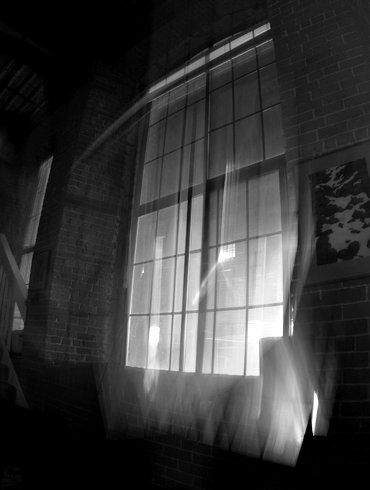Web Rules for Photographers

In the web development world (which I call home for about eight to ten hours a day), we have a few general “rules” we follow to make websites more usable, accessible, and effective. Photographers are a technically savvy crowd, especially since digital has gotten so popular, but they don’t always think about things the way web developers do. Here are some simple guidelines you can follow when promoting your work on the web.
For the most part, web standards are a great idea and those who follow them are probably benefiting their users. At the same time, some companies and organizations treat standards like a buffet, using what they want and ignoring the rest, leaving many people in the lurch. A standard is only as good as its adoption.
That said, you don’t have to be a pompous standards nerd to make your photography more accessible over the web. You just have to keep a few basic guidelines in mind and try to follow them whenever you can. This is by no means an exhaustive list, nor is it meant to be canon law.
Never, Ever Say “Click Here”
The most atomic element in vanilla web design is the link. Beneath all of the stylization, navigation, content, and so on, there are links binding everything together. The link was the original thesis of the Internet; its purpose for being was to create a cross-referenced volume of information. Each link that points to another place should indicate where it will take you when you click it. Links that say “click here” do not tell your users anything. Mobile devices may aggregate links on a page and when your page contains 12 links that all say “click here,” how will anyone know where they go? The World Wide Web Consortium calls this the “human test.” Machines don’t much care what your links say, but people do.
Use Stylesheets

Though the use of Cascading Stylesheets (or CSS) has been fairly standard over the past few years (which is nice, considering the standard itself was finalized in the ’80s), I still find cases where this best practice is completely disregarded. The reasons for using CSS to design your page are manifold, but the top couple are internationalization, and accessibility. By separating the information on your page from the way the page looks (or the separation of style from content as we often say), you can make it much easier for people with disabilities to access your information, and for people using machine translation to do so as well. Here is a nice excerpt from Kynn Bartlett’s “Teach Yourself CSS in 24 Hours” that talks about CSS for accessibility and internationalization. (Notice how my link text describes exactly where it will take you? Nice, eh?)
I recognize that as a photographer you may or may not have control over the way your site is put together. Often, we rely on third parties to build and host our sites for us. This tip is meant to raise the overall understanding of these important issues so that you can ask the right questions of your designer or web host before spending time and money on a site that excludes the disabled.
Don’t Forget Alternate Text
Even though we primarily deal in visual imagery and you might wonder at first whether your website and its content would be interesting or useful to someone who can’t see, why not do what you can to accommodate everyone? To that end, try to make sure that every image on your site contains alternate text using the alt attribute. In HTML, it looks like this:
{lang=“html”}
By applying the alt attribute to your image tags, you ensure that braille readers, text-based browsers, and other alternate methods of viewing your site can make sense of what would have been displayed there if images were available. It’s just a good practice.
Sharing Is Caring

One of the most effective methods of advertising is friendship. When people see something interesting or entertaining on the Internet, they want to share it with their friends. Entire sites such as YouTube, digg, del.icio.us, and the brand new PhotographyVoter.com are based on this principle. So what can you do to make sure your content can be shared effectively?
The most important factor in “shareability” is whether a user can send the URL displayed in their browser to their friends and bring those friends directly to the exact same page of your site. In other words, if someone comes across a photograph they like and they want to show everyone they know, they ought to be able to copy and paste the address from their address bar and bring all of their friends to that exact same page.
There are two huge technical impediments to this ability: frames and Flash. Frames and Flash can cause the URL in the browser’s address bar never to change, which prevents people from sharing specific pieces of content with their friends, damaging that excellent free advertising you want to tap into. I am often asked for advice on creating or commissioning websites and I always discourage my friends from having their gallery sites built entirely in Flash for that exact reason.

A real disappointment was when one of my photographer friends showed me the website she purchased from a company that specializes in hosting photographers’ gallery sites. The site was built using a template she chose from a selection of designs they had available and it used frames heavily, not only restricting how much of the browser window could be used by content, but by obscuring the direct links to her images. Nobody likes to have to write a whole message to someone like “I saw this great photo, go to somesite.com, click Gallery, then click Portraits, then scroll down a little, click on the guy with the guitar, then scroll down a bit more to the fourth row… Count in from the left…”
That company doesn’t understand their clientele!
Conclusions
As I said earlier, the majority of photographers I know don’t have the time or inclination to learn web design, so they are at the mercy of a third party to design and build their sites. Moreover, someone who specializes in building websites should probably be better at it than someone who moonlights building websites. That said, I hope these tips come in handy as you hone your web presence or search for someone to help you do it!
More Information
Someone criticized this article for excluding watermarking as part of the whole website package, which I suppose is a legitimate claim. I talked about watermarking previously in Protecting Your Digital Rights and it’s kind of a novel, so click carefully.
Another person brought up the somewhat common act of linking to your photos from another site, potentially abusing your bandwidth. I shied away from that topic when writing this article because it covers more technical server administration stuff, but if anyone really wants me to write about it, I would be happy to explain how it can be prevented using server configuration settings.
The bottom line is that developing and hosting a website can be a career unto itself (I would know, I administer over 600 websites at work every day) and there is a lot to learn about and be aware of. I hope that these very simple items are helpful and if there is a general interest, perhaps I will do more technical articles in the future.
 Single-Serving Photo
Single-Serving Photo
Comments